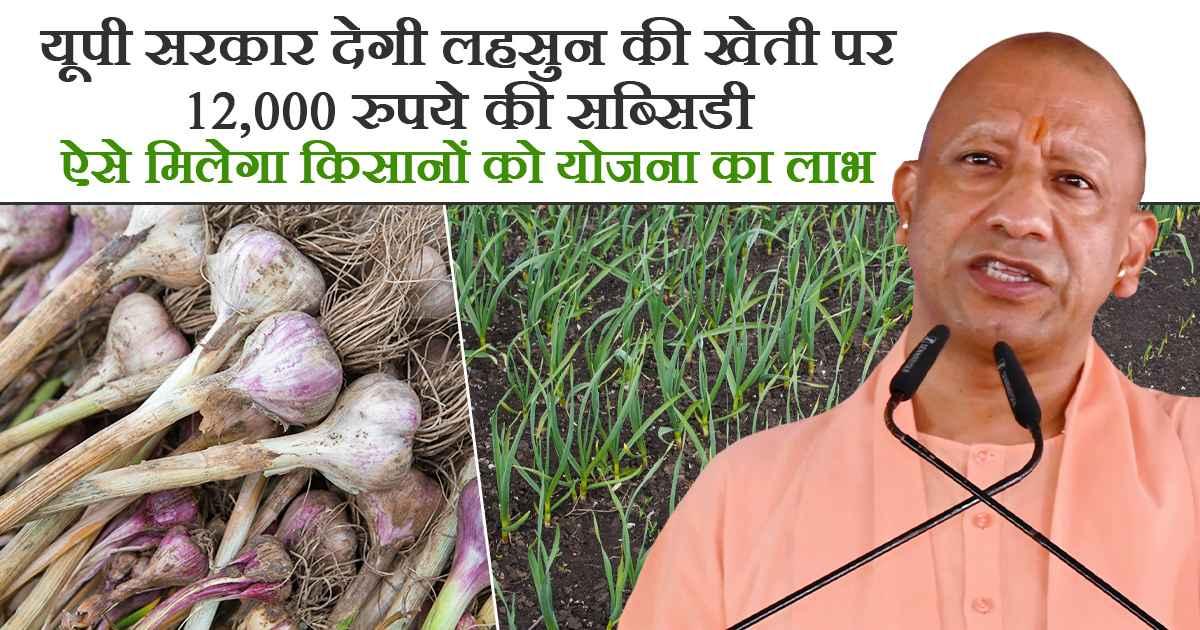
To meet the growing demand for garlic and stabilize its prices, the Uttar Pradesh government has introduced a new scheme encouraging garlic cultivation among farmers. State Horticulture Minister, Shri Dinesh Pratap Singh, announced that this initiative, funded under the “Integrated Horticulture Development Mission” by the Government of India, will cover 45 districts across the state.
The scheme is available to farmers in the following districts: Saharanpur, Muzaffarnagar, Meerut, Bulandshahr, Ghaziabad, Bareilly, Moradabad, Agra, Mathura, Mainpuri, Hathras, Kanpur, Etawah, Kannauj, Lucknow, Unnao, Sitapur, Rae Bareli, Barabanki, Sultanpur, Prayagraj, Kaushambi, Pratapgarh, Varanasi, Jaunpur, Ghazipur, Basti, Sant Kabir Nagar, Siddharthnagar, Ballia, Kushinagar, Maharajganj, Banda, Hamirpur, Jalaun, Chitrakoot, Mahoba, Lalitpur, Mirzapur, Sonbhadra, Bhadohi, Gorakhpur, Jhansi, Ayodhya, and Farrukhabad. Under this scheme, 60% of the funding is provided by the central government and 40% by the state government.
The Integrated Horticulture Development Mission the UP government will provide financial assistance for garlic cultivation. Farmers will receive a 40% subsidy on the per-hectare cultivation cost of ₹30,000, amounting to a maximum subsidy of ₹12,000 per hectare. This subsidy is applicable for land sizes ranging from 0.2 hectares to 4.0 hectares.
Target of 10,000 Hectares for Garlic Cultivation: The UP government aims to expand garlic cultivation by an additional 10,000 hectares as part of its Spice Area Expansion Program for the 2024-25 fiscal years. The proposal for this target has been approved by the Ministry of Agriculture and Farmers’ Welfare, Government of India.
Online Registration Process: Interested and eligible farmers can take advantage of this scheme by contacting the Horticulture Officer in their district. Additionally, they can register online through the official website: (http://dbt.uphorticulture.in).
Read More... Record surge in Kharif Crop production for 2024-25, Accurate area estimates via Digital Crop Survey